Meeting the needs of people is not a game (Tingey & Manicki, 2022c). It requires applying knowledge in a civilized environment where systems support ongoing results. The head, the heart, and the hand should be involved for understanding, buy-in, and momentum. Multilateral efforts have identified needed knowledge—IPCC (2022) and One Health (WHO, FAO, and OIE, 2019) in particular. Three capacity development clusters, two in the Eastern Hemisphere and another in the Western Hemisphere, are to convert knowledge and governance norms to proper digital forms. These can activate a proposed urban health data collection model for ongoing support and guidance.
Challenge
A recent Foreign Affairs, Vol 101(1) calls into question whether governments can effectively manage cyber challenges. The case is likely true under current practices. However, these represent a corruption of original intent and do not support ever-present processes critical to problem-solving in nature and society (Whitehead, 1929/1978).
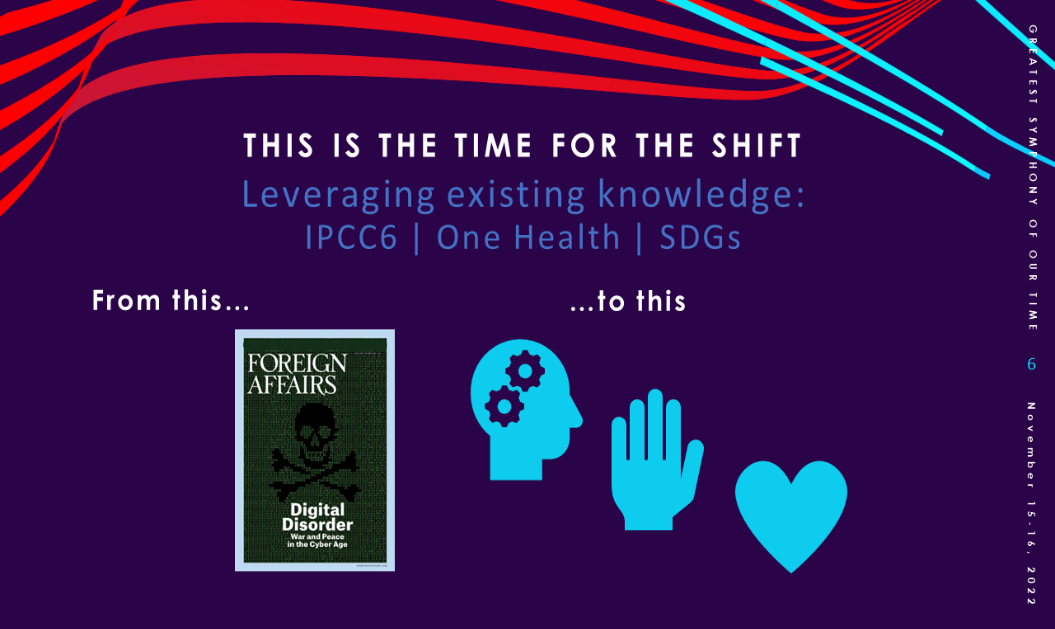
Three kinds of challenges present themselves, which we categorize as the “head,” the “hand,” and the “heart” (Scherkenbach, 1991). As per this perspective, explicit attention to logical change (head), physical change (hand), and emotional change (heart) is presented, as seen in Figure 1. This can resolve critical problems and bring the digital world in full support of the needs of the people.
Head: Needed knowledge stores exist, primarily due to prior efforts of the G20 and associated institutions. The problem is presenting supportive solutions in proper, digital forms that can be carried out as needed. That is a “hand” problem, but one that doubles back and confounds the question of available knowledge in some cases.
Hand: Existing technology is mature and robust, but non-technologists do not readily commandeer it for design and dissemination. Rogue information processing configurations have been forced onto the world stage with the growth of the Internet. These do not use valid, trusted computational and security models as had been developed in prior decades (Tingey, 2009). The ever-present desktop metaphor was never means-tested for security but rather for “fun” (Waldrop, 2001).
Most notably, a means of directly transferring detailed, process-oriented thought products for digital integration, consolidation, and use is lacking. Using music production as an example, it is as if the tremendous musical organizations of the world were lacking sheet music outlining detailed performance requirements laid out by brilliant composers. Memory does not suffice—alone, it increases the limits and costs of accurate performance beyond feasibility. Providers, caregivers, policymakers, and all the people in areas of health, climate decision-making, sustainable finance, and other fields characterized by complexity and change need timely solutions to this.
Heart: Viable guidance in digital forms is similarly lacking, further weakening prospects of success. Emotional reactions to this problem limit success and constrict the effects of G20 actions and other multinational, regional, and individual country efforts. People sense that knowledge-based solutions are lacking—at least in forms that will ensure meaningful and needed solutions. This “feeds the beasts” of dissolution, despair, and prevarication. Antisocial social media has been described as being more effectively supported by “the cumulative result of technological innovations” than are truthful, more legitimate purposes (Cooley & Nexon, 2022).
Accountability is best achieved, as with the great symphonies, by clearly defining desired behaviors (Miller, 1978) with public accountability via outcomes. This is a human-centered approach. We published a paper (Tingey & Manicki, 2022b) that provides insights into related problems outlined by Snower and Twomey (2022).
A country may assist in creating such resources in the global interest even though its domestic programs do not initially use them.
Proposal
The effort is to make use of knowledge-driven digital capacity in support of G20 priorities, typically post-pandemic health, climate change policy, and sustainable development and finance. Attention is to be directed as well to the 2030 Agenda for Sustainable Development (United Nations, 2015). Examples herein relate to the human health aspect of One Health.
We propose the establishment of three linked capacity development centers to convert static knowledge forms to useful forms, many of which have been developed with G20 and multilateral sponsorship. This is like capabilities demonstrated by the musicians and other performers.
We also propose the establishment of large-scale observatories for ongoing data collection and evaluation of human health and related conditions, using knowledge locked up in documents. Such observatories are to be configured for very high volume, sufficient for surveillance, evaluation, and guidance of health decisions for all persons.
1. Create three electronically linked education, consulting, and broadcast facilities in Bali, Indonesia, Łódź/Piotrków Trybunalski, Poland, and Park City, Utah, the USA, for capacity development in digital multilevel governance, which integrates knowledge and authority [Head and Hand].
Establish a beachhead of effective digital governance by focusing on two kinds of processes—administrative processes that support authority and administrative standards and knowledge-based processes that support complex questions of science and society. Viability is to be achieved by allowing experts and authorities in both cases to design process requirements themselves based on the depth of their knowledge and experience. This will allow them to arrive at an essentially perfect system performance, much like the great musical composers were able to perfect their compositions.
This will not come easily, as there are few guidelines and little experience in the professional ranks for the creative activity of this kind. Although the concepts supporting such activities are simple and can be transmitted in a short time frame, their function and implications of their use will not always be obvious. Experience has shown that there tends to be an inverse relationship between information technology design experience and facility concerning generative taxonomies and trees.
There is a tendency to gloss over details in system design, a problem with cascading aftereffects that are rarely beneficial. One benefit of working artists—musical composers in particular—is to learn from them to think completely, supporting knowing and doing. Experienced musicians can thus help to hold process design novices’ ‘feet to the fire’ in their efforts to document their knowledge and related processes in time. Ultimately, systems can be perfected in the same tradition of musical art forms. The tools are distinct between music and process design generally, but in both cases, they allow for complete solutions and mastery of needed functionality. These lead to the achievement of permanence, which Dr. Tingey defines as he observed it in an early tree design project (Tingey, 2014).
Such activities would support capacity, policy, and systems development for the myriad of governmental, social support, and private organizations engaged in multilevel governance and education and deployment in critical multilevel governance functions around the world. The EU has led out in multilevel governance, but substantial work has also been carried out in the field of climate science and policy by the Low Emissions Development Strategies Global Partnership (LEDS GP) and the thematic working group on Subnational Integration (SNI-WG).
Competency is to be developed by establishing educational and implementation centers in three integrated complexes in Bali, Indonesia, Łódź/Piotrków Trybunalski, Poland, and Park City, Utah, USA. These are desirable locations, close to nature. This is important for the intensive kind of work required in process design.
Selected participants will receive education, training, and consultation in innovative system development onsite and online. They are to establish empirical, network-based protocols for identifying, recruiting, and empowering thought leaders in essential areas of both knowledge and authority. Figure 1 demonstrates how this is to be achieved, using tree-based models to link the two kinds of processes.
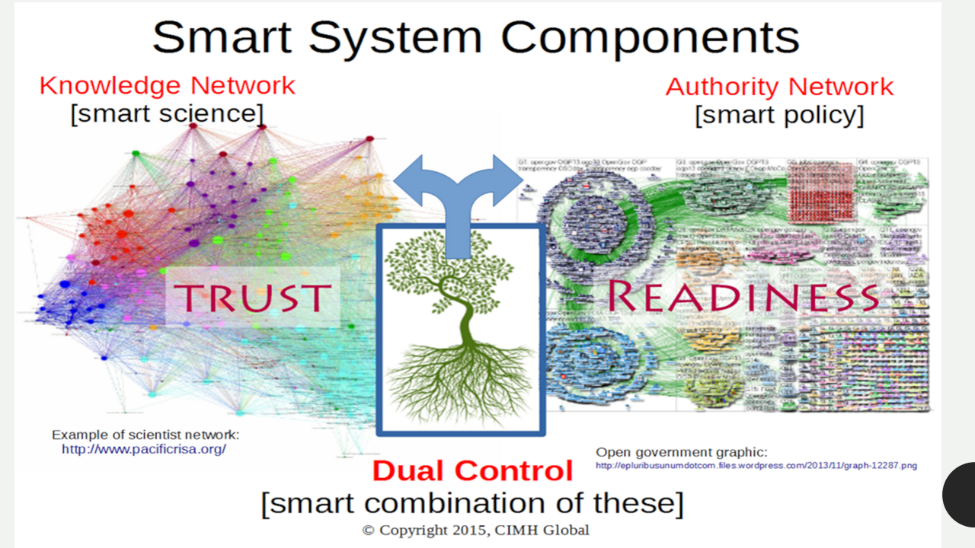
Figure 1: Example of dual governance model in support of improved governance outcomes.
Administrative processes are “vertical,” which are established by the nation, institution, or enterprise in question based on native preferences and resources.
Meanwhile, knowledge-based processes are ‘horizontal’ in nature. These processes rely on conceptual boundaries with international implications and can be sponsored and developed by global interests and networks.
The purpose of capacity development is to empower experts and authorities to extend their present works, typically in document form, to digital, computer-ready forms that can be integrated functionally and used by others.
This is a merit-based model. In every case, design participants are to “earn their way into the room” based on the norms and requirements of the fields in question. This is especially true of the “green” layer, which is the realm of subject matter specialists whose work is not to be skewed or purloined by technicians. How are they to earn their way in? Each field has ways of identifying thought leaders, such as peer review, publications, conference presentations, and text authoring. Such communities exist, composed of specialists, generalists, and journeyman researchers who work together to uncover truths. The difference to be introduced is not simply to ‘get published,’ but to participate in the systematic, digitized application of what they have learned.
The original Google application has similar underpinnings. It was built around a page-ranking algorithm, a social network analysis tool that gave it instant credibility [U.S. Patent 6,678,681]. A similar methodology can identify critical scientists and thought leaders based on citation networks representing journal articles and patents (Chakraborty et al., 2020; Borgatti et al., 2009). The same kind of ‘gravity’ that brought users to the Google engine can be gained by identifying and empowering key scientists, experts, and thought leaders using generative taxonomies as a digital tool (Tingey, Millington, and Graham, 2007).
Profundities LLC has essential process design tools in two Java software implementations to be used and expanded upon with such processes in mind. These are called generative taxonomy tools. These are based on research in classification models dating to the 1960s in Utah in conjunction with a hundred manufacturing firms, the Manufacturing Consortium. The original research was conducted by Dr. Dell Allen of Brigham Young University and continued by Dr. Kenneth Tingey at Utah State University and the Utah State University Research Foundation (Allen & Tingey, 2004). Tingey also oversaw a major project using the generative taxonomy model at Idaho National Laboratory, one of seventeen U.S. energy laboratories (Paper & Tingey, 2002), and a conversion project from the older software to a new implementation in 2013 with Timken Corporation of Canton, Ohio.
Table 1 clarifies the benefits of such process design tools. They demonstrate benefits to be gained from converting existing knowledge forms for nuanced, meaningful use and integration.
Table 1: The knowledge breakthrough providing an integrated process for experts and authorities
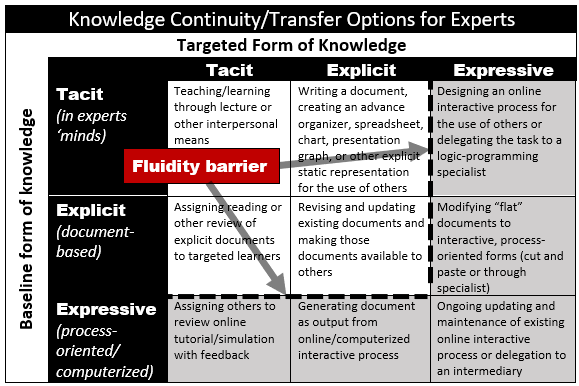
This work can be carried out in partnership with competent local and regional specialists, who can fill in standardized content in collaboration with the designated leaders. Even though a person is a thought leader, that does not mean that he or she will adapt well to tree design. Accommodation needs to be made for this by organizing participants in small groups, where tasks can be shared (Tingey & Manicki, 2022a).
Table 2 outlines estimates of the number of targeted authors of the existing material that can be empowered through capacity development as described above. These are divided into two categories, the “horizontal” knowledge-based area, and the “vertical” authority or finance model.
Table 2: Program development worksheet for capacity development based on G20 priorities
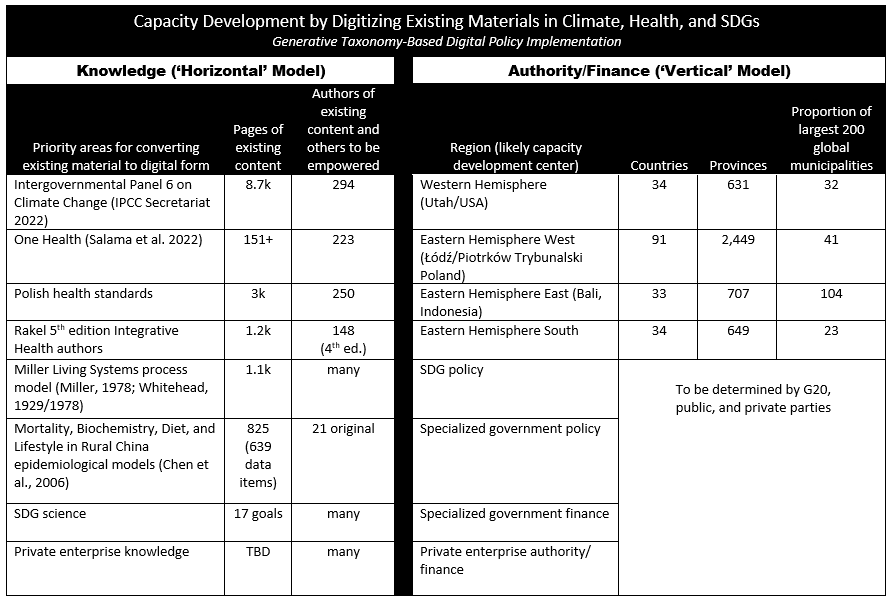
As can be seen to the left, in the knowledge-based section of Table 2, targeted participants are the actual authors of internationally sponsored scientific and policy efforts in climate, health, and sustainable development and finance. They know the material best and they are situated to be able to maintain and update the processes.
To support the design process, it is important to include music programming and interaction with musicians and composers in the process. This serves both educational and motivational benefits. There is no better example of the challenges and benefits of process design using generative taxonomy tools than in music composition and performance. Parallel composition efforts would encourage participants, provide additional structure in the design process and support public dissemination of end products. This has been tested with small ensembles.
2. Develop social security evaluation and payment system for consideration on a national level [Head and hand]
Given that the primary subject matter of the project is health, based on a post-pandemic commitment to improved private and public health, the financial function supporting this is very important. As before, a solution must be knowledge-driven, and data driven to support resilience of the people and provide comprehensive surveillance of all kinds of pathogens and sources of disease and disability. This must be done purposefully, leveraging existing, successful examples.
First, the infrastructure supporting vertical and horizontal processes together is needed. Second, specific efforts to identify and empower horizontal networks of knowledge-based communities are needed to provide a resource for G20 countries and others to tap into such knowledge.
There are thirty categories as demonstrated in the original Polish plan. Priorities among these must be set; Table 3 outlines some example items. National and regional interests can establish priorities based on their priorities and conditions.
Table 3: Example of initial priorities for standards-based national health social security/protection plan
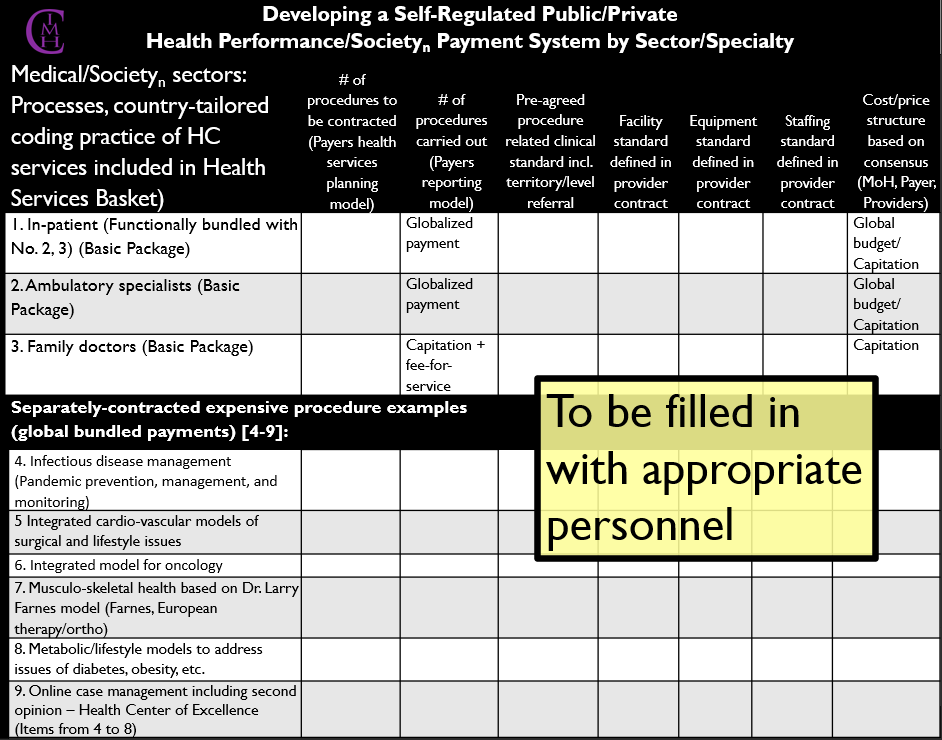
The Manicki program for matching standards with payment systems is seen in Figure 2. This has been used in several dozen sponsored national social security and social protection programs over the last two decades (Tingey, Manicki et al., 2018).
Working together, experts and authorities can establish a planning cascade based on direct input by communities of research and practice along with relevant authorities so that the right things get done the right way to be compensated as provided by law and available resources. Using the same or similar scientific, or knowledge-based processes, countries will be able to employ different policy arrangements under different economic and financial conditions.
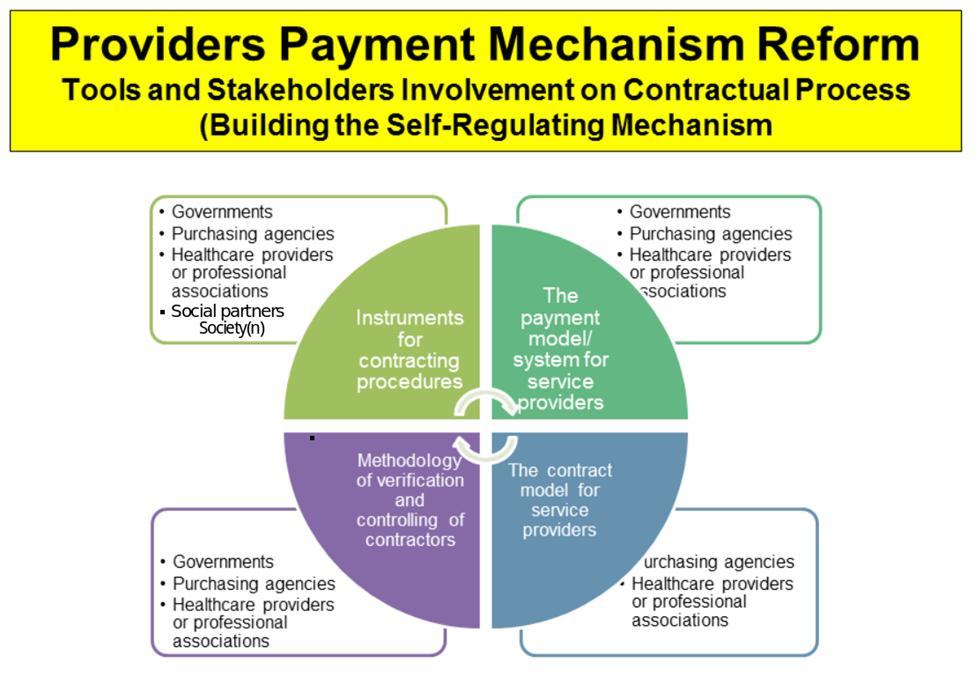
Figure 2: Manicki planning cascade for standards and finance
3. Create prototype urban observatory for comprehensive health-related computation and data collection in support of such dual governance with global implementation in mind [Hand – systems development]
We propose creation of a prototype data collection observatory as a model for major world cities, for surveillance of both infectious and chronic disease conditions. Cities are the most relevant and important locales for data collection. All aspects of health and prosperity come together in this way. These are to be designed for high-volume data collection, sufficient to collect and evaluate health data of potentially every citizen. With such outcomes, providers and institutions can act before disease conditions take hold, including physical and mental health conditions.
Utilizing advanced testing and automation capabilities, individual costs for testing and system-based interpretation and guidance can be minimal. Based on preliminary planning levels, construction costs for an individual center are estimated at $30 million. Real estate costs will be challenging in many environments; building up rather than out will be required as a practical matter.
Not only could urban environments be serviced, but observatory functions could be integrated with rural and maritime environments in hub-and-spoke arrangements. Such a system would be capable of carrying out epidemiological functions as well as private health and performance guidance and meaningful clinical referrals. Table 4 outlines estimated numbers of centers in each of eleven major world regions or countries. These demonstrate the need for such centers in highly urbanized parts of the world, where contamination and contagion are more problematic. Highest areas of need with respect to the 100 largest world cities include China, Latin America, India, and Asia. In short, based on the needs, requirements, and risks of large cities, there is a particular need for urban observatories in urban-intensive regions.
Table 4: Number of global health observatories based on 2.5 million population segments in three tiers of global cities by size (CW is for Commonwealth countries of the former British Empire)

At an estimated fee of $30 per individual session, the annual revenue per center would be $62.5 million, approximately twice the construction cost, for comparative purposes. Of course, costs would factor in. The program will be a strong advocate for Fair, Reasonable, and Non-Discriminatory (FRAND) intellectual property principles with respect to aspects of fundamental global health, keeping such costs low. Of course, the lower the costs, the broader the potential distribution of products and methods, enhancing rewards.
Figure 3 demonstrates a kind of health report made possible through the program. It serves to compare ongoing changes in the data in question based on the best available processes as defined and maintained by leaders in the respective fields, as identified and trained in Step 1 of this Proposal.
Based on the Optimum Performance Living (OPL) model, direct connections can be made to dozens of consumer market opportunities that have to do with health and performance. The concept of OPL emerged from the physical therapy practice of Dr. Larry Farnes (Farnes, et al., 2014). It looks beyond good health, beyond prevention, to desired performance. Tree-based systems can provide contextual, detailed guidance along the line to providers for both marketing and configuration purposes. The trees, which have roots in manufacturing and computer numerical control (CNC), could be used to drive wheelchairs, and configure custom restaurant meals derived from detailed OPL characteristics of people in the system (Manicki, et al, 2014).
The markets in question are substantial with respect to OPL representing roughly half of global GDP.
The program will make use of cloud computing technology as a base for the nine layers of technological and managerial activity, each separate and color-coded (Tingey, 2004, 2006, 2008). The layers in question are, from bottom to top, hardware, operating/network systems, data (databases, directories, and file systems), application software, interface technologies, process-based models developed by experts and authorities themselves, management, governance, and customers/clients/citizens. There needs to be a minimum of waste from the computation power of the hardware in question to attentive, solid, adaptable processes that meet the needs of those target audiences.
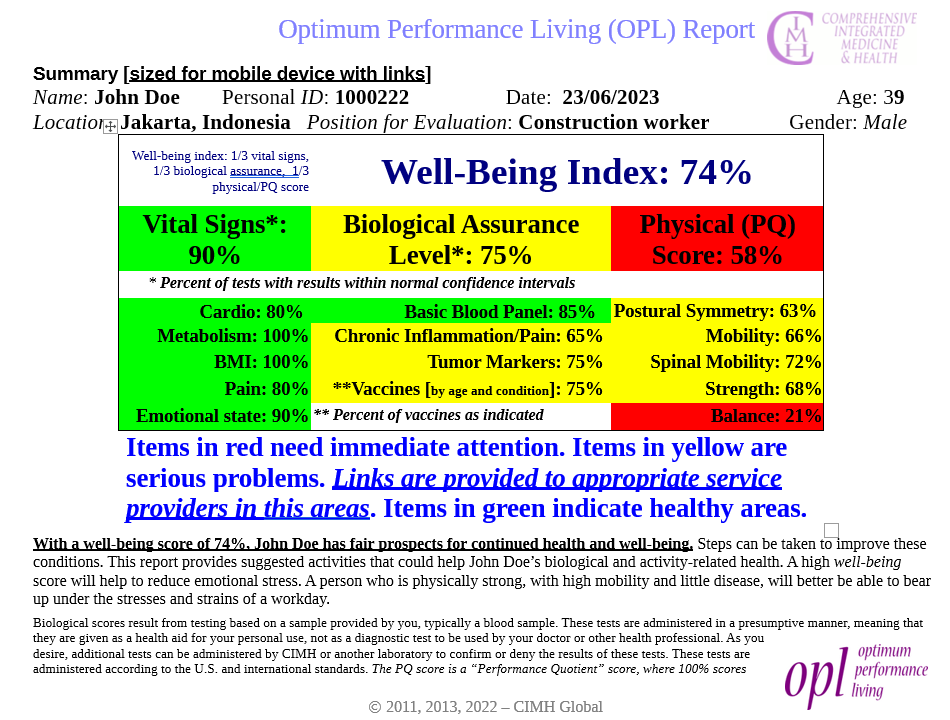
Figure 3: Sample Comprehensive, Integrated Medicine & Health/Optimum Performance Living Report
Each design participant at each layer must thus be called on to carry out his/her tasks. They are not to be allowed to cross over to other levels, either reaching up through the system to business processes. Nor should the business process and expert process participants be able to reach down. This is to help them to concentrate their efforts and skills in their own fields, but to eliminate means of compromising the system, its data stores and processes, or the institution’s operations and legitimacy.
By securing each layer, extending processing power upward in reliable fashion, context can be defined in the first place, brought into use based on incoming data streams, and never lost to corruption, misuse, foul-play, or co-opted against the interests of end users or the system and their sponsoring institutions.
CONCLUSION
By introducing both concepts and digital infrastructure, stated goals by Indonesia can best be met. As seen in Table 5, G20 countries have contributed to aspects of the program in its early stages. We recommend collaboration with key institutions in the countries in question in the early stages of development of such a system. Many of these are outlined in Table 2.
Part of the challenge has to do with knowledge of nature and of society. Answers can be found within knowledge networks and communities of practice. Processes supporting these can be organized and deployed using technology. Typically, this is not being done. Another part of the problem has to do with authority at many levels. Processes can be organized in similar fashion and matched.
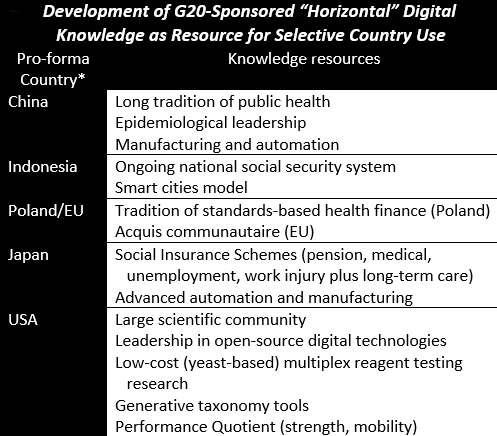
Nation-level support with G20 leadership could create an international collaborative effort among leading scientists and practitioners in the development of a process-based, smart approach to health and medical care and associated funding and policy support. These are to be identified principally via social network analysis of scientific publications and patents, as well as practice networks. Social network analysis represents a viable, quantitative, mature approach to identifying such networks and demonstrated actions and prestige among them.
References
Dell K. Allen and Kenneth B. Tingey, Taxonomy Development: The Super-science, Logan, Utah, Utah State University Center for E-Commerce, 2004, https://youtu.be/7Dg5qFb4KLc.
Stephen P. Borgatti, et al., “Network Analysis in the Social Sciences”, Science Vol. 323, No. 892, 2009, DOI: 10.1126/science.1165821.
Manajit Chakraborty, Maksym Byshkin, and Fabio Crestani, “Patent Citation Network Analysis: A Perspective from Descriptive Statistics and ERGMs”, PLoS ONE 15(12), 2020, https://doi.org/10.1371/journal.pone.0241797.
Junshi Chen, Richard Peto, Wen-Harn Pan, Bo-Qui Liu, T. Colin Campbell, Jillian Boreham, Banoo Parpia, Patricia Cassano, and Zheng-Ming Chen, Mortality, Biochemistry, Diet, and Lifestyle in Rural China: Geographic Study of the Characteristics of 69 Counties in Mainland China and 16 Areas in Taiwan, Oxford, UK, Oxford University Press, 2006.
Alexander Cooley and Daniel H. Nexon, “The Real Crisis of Global Order”, in Foreign Affairs, Vol. 101, No.1 (January/February 2022), pp. 103-118.
Larry D. Farnes, Miroslaw Manicki, Steve Lee, Rex Spendlove, Dejan Ostojic, and Kenneth B. Tingey, Optimum Performance Living: We Can Have It If We Want It, Logan, UT/Warsaw, Poland, CIMH Global, 2020 Program for Global Health, 2014, https://tinyurl.com/5n8zebxf.
IPCC Secretariat, IPCC Media Advisory: Updates on Revision to the Schedule of the IPCC Synthesis Report, Geneva, Intergovernmental Panel on Climate Change, June 6, 2022.
Miroslaw Manicki, Asih E. Putri, Dejan Ostojic, and Kenneth B. Tingey, The Big Step Forward: To Knowledge-driven Universal Coverage, Logan, Utah USA/Warsaw, Poland, CIMH Global/Profundities LLC, 2014, https://tinyurl.com/2ybax84c.
Miroslaw Manicki, Dee Stevens, Larry Farnes, and Kenneth B. Tingey, Prospering in an OPL Environment: Seeing Growth in Growth, Logan, UT USA/Warsaw, Poland, 2014, https://tinyurl.com/276ed3sf.
James G. Miller, Living Systems, New York, McGraw-Hill, 1978.
David Paper and Kenneth B. Tingey, “Application of Tree-based Solutions: A Case Study With INEEL, IT5615”, Journal of Cases on Information Technology (JCIT) 4(1), 260-271, 2002, DOI: 10.4018/978-1-93070-840-2.ch018.
William W. Scherkenbach, Deming’s Road to Continual Improvement, Knoxville, Tennessee, SPC Press, 1991.
Dennis J. Snower and Paul D. Twomey, Empowering Digital Citizens: Making Humane Markets Work in the Digital Age, Hamburg, Germany, The Global Initiative for Digital Empowerment (GIDE), 2022.
Kenneth B. Tingey, “Chapter Ten: Taxonomy-driven Secure Enterprise Systems: Closing the Back Door While Beckoning from the Front”, in Kenneth B. Tingey, Methods-based management. San Diego, CA: University Readers, 2009, 175-182.
Kenneth B. Tingey, The Solution: Permanescence, Logan, Utah, Profundities LLC, 2014.
Kenneth B. Tingey and Miroslaw Manicki, Expressive Knowledge, the Seminal Global Public Good,” Logan, UT USA and Piotrków Trybunalski, Poland, Profundities LLC and CIMH Global, 2022a, https://tinyurl.com/mt83rshm.
Kenneth B. Tingey and Miroslaw Manicki, Operationalizing “Empowering digital citizens: Making humane markets work in the digital age,” Logan, UT USA and Piotrków Trybunalski, Poland, Profundities LLC and CIMH Global, 2022b, https://tinyurl.com/2p8ptzz5.
Kenneth B. Tingey and Miroslaw Manicki, What Games Are Being Played? Global Policy Forum 2022,” Logan, UT USA and Piotrków Trybunalski, Poland, Profundities LLC and CIMH Global, 2022c, https://tinyurl.com/5d67namv.
Kenneth B. Tingey, Miroslaw Manicki, Neshad Asllani, Larry D. Farnes, and Laura Tingey, King Corruption vs the Conceptual Heartland: Society(n), the EU Acquis Communautaire, and a Sound Conceptual Border Environment, Logan, Utah USA: CIMH Global, 2018, https://tinyurl.com/2d5m55w3.
Kenneth B. Tingey, Michael J. Millington, and Michael Graham, M., A Communities of Practice Approach to Training and Education: Building Sociocognitive Networks in Rehabilitation Counselling, White Paper, Logan, UT: National Clearinghouse of Rehabilitation Training Materials, Utah State University, 2007, https://tinyurl.com/2e5v388s.
United Nations, Transforming Our World: The 2030 Agenda for Sustainable Development, New York, United Nations, 2015, https://sustainabledevelopment.un.org.
Alfred North Whitehead (Auth.), and David. R. Griffin, D. W. Sherburne (eds), Process and Reality, Corrected Edition, New York, The Free Press, 1929/1978.
World Health Organization (WHO), Food and Agriculture Organization of the United Nations (FAO) and World Organisation for Animal Health (OIE), Taking a Multisectorial, One Health Approach: A Tripartite Guide to Addressing Zoonotic Diseases in Countries, Geneva: World Health Organization, Food and Agriculture Organization of the United Nations, and World Organisation for Animal Health, 2019.Appendix
Four of the 2020 Program/CIMH Global posters and one additional figure apply to the T20 proposal. They are as follows:
Leveraging Dual Control and Fluidity: Large-scale urban health observatories for everyone. This is an example of key Smart City capacity at the heart of the city. This can serve personal and public health needs by bringing data and process together on a systematic, ongoing basis
Roles and Opportunities in the 2020 Program: Leveraging long-term OPL (Optimum Performance Living) opportunities. This outlines the basic layer program, with emphasis on Layer 6 – the green layer – where knowledge and policy processes are designed to function together.
National Cooperative Planning Model: Gateway to dual control in health. This shows pictures of conversion of documents to tree forms to digitize the knowledge in question and make it available via networks and devices. It shows improved performance from cooperative, integrated medicine to optimum performance living.
Conclusive Resolution of Political, Social, Economic, and Environmental Issues: Head [knowledge], heart [music], and hand [technology]. This provides summary information on how digitization can be brought to the service of the people and to the various institutions designed to support their needs and wants.
2020 Program for Global Health: Economic Development Tiers. This outlines four social and economic tiers, with social and economic development implications, according to proposed means of supporting dual application of knowledge and authority.
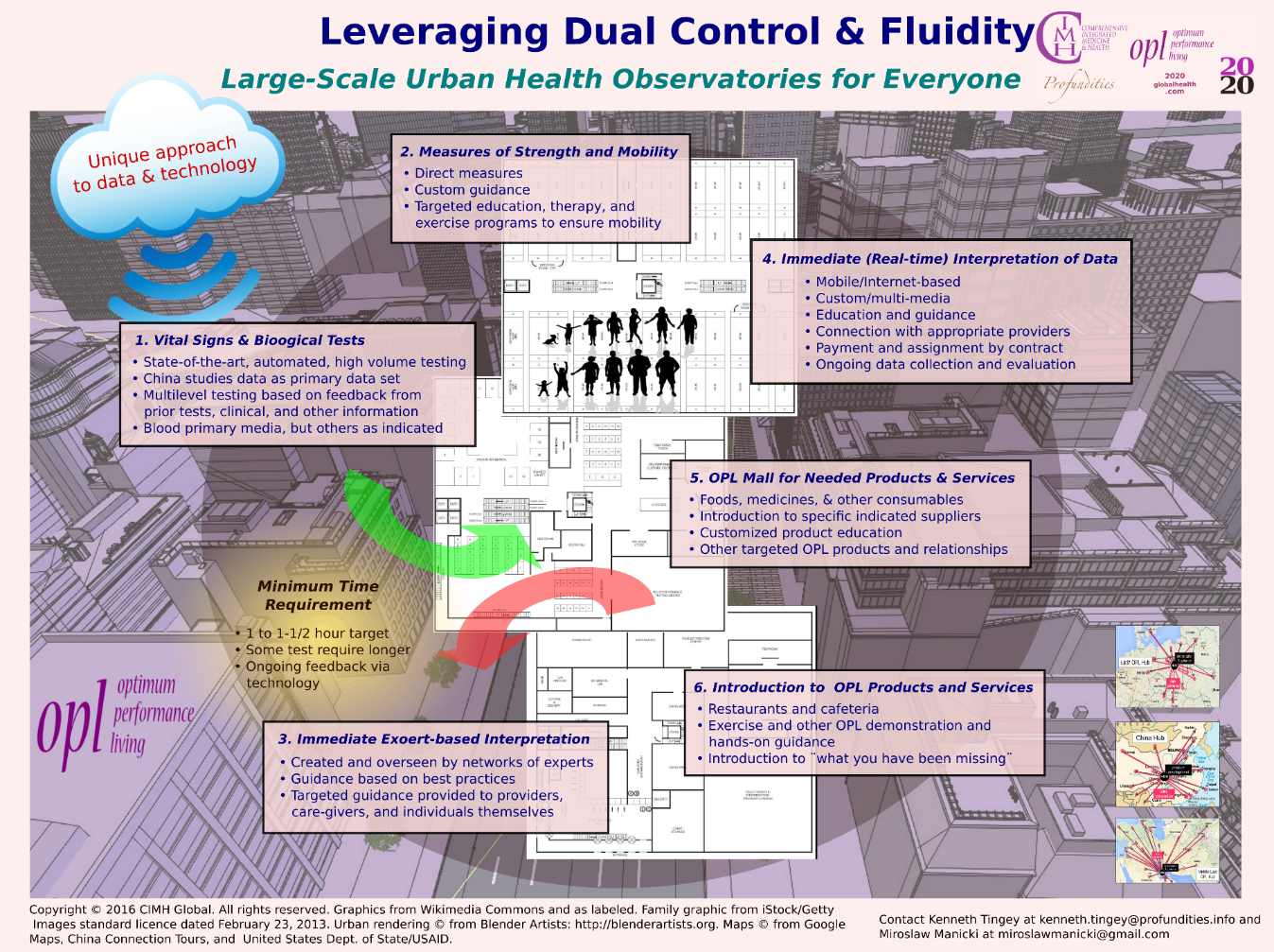
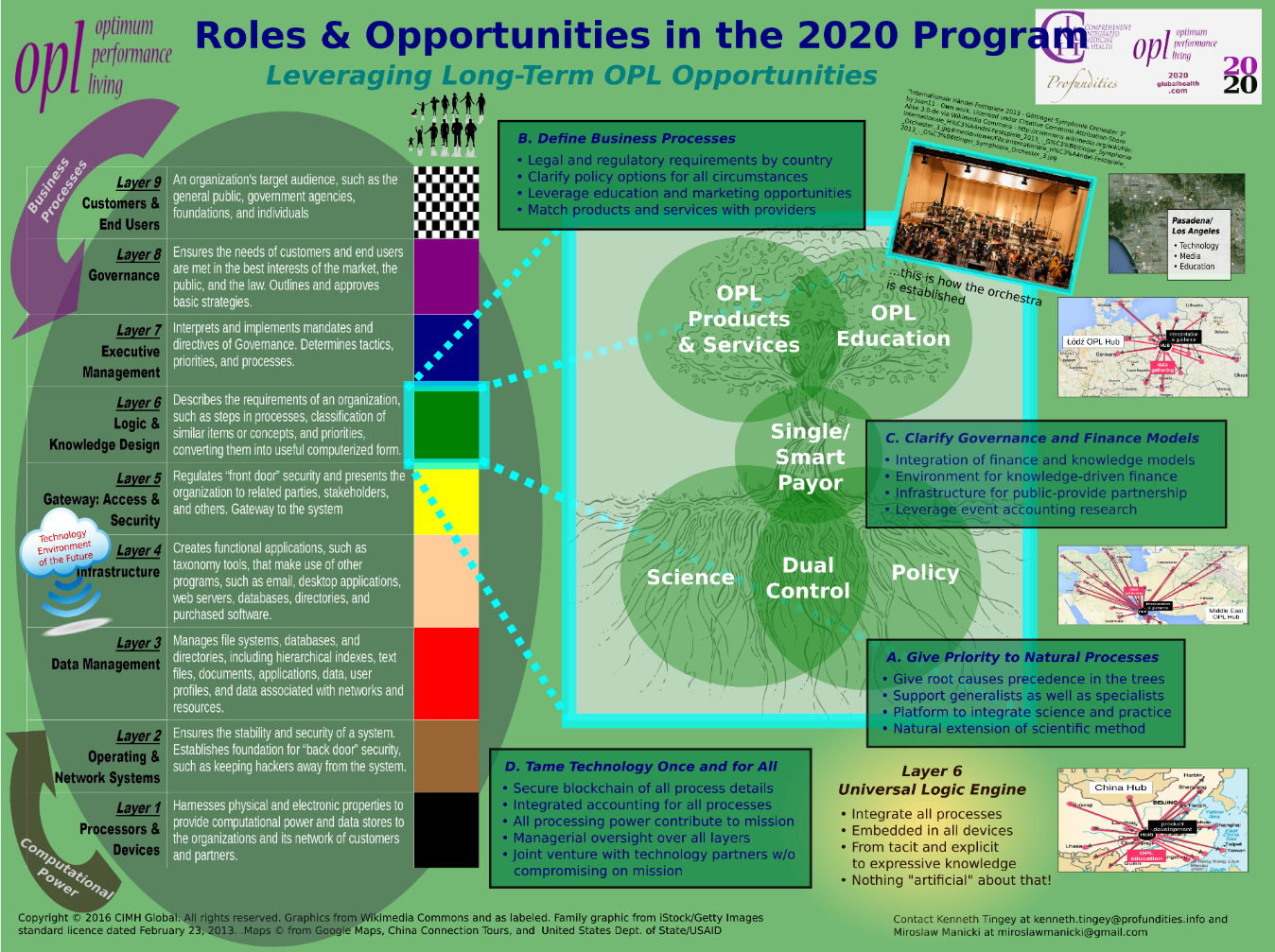
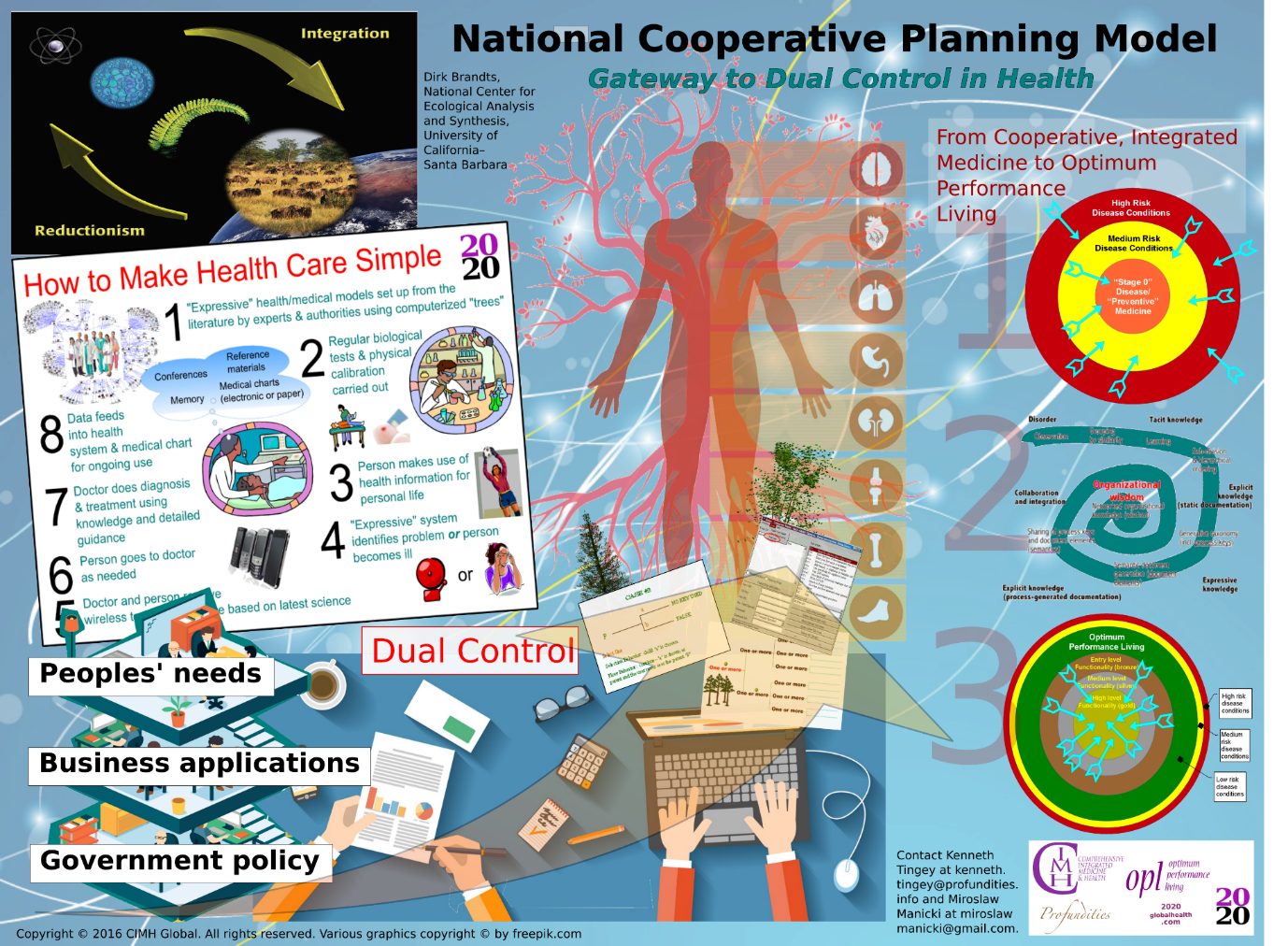
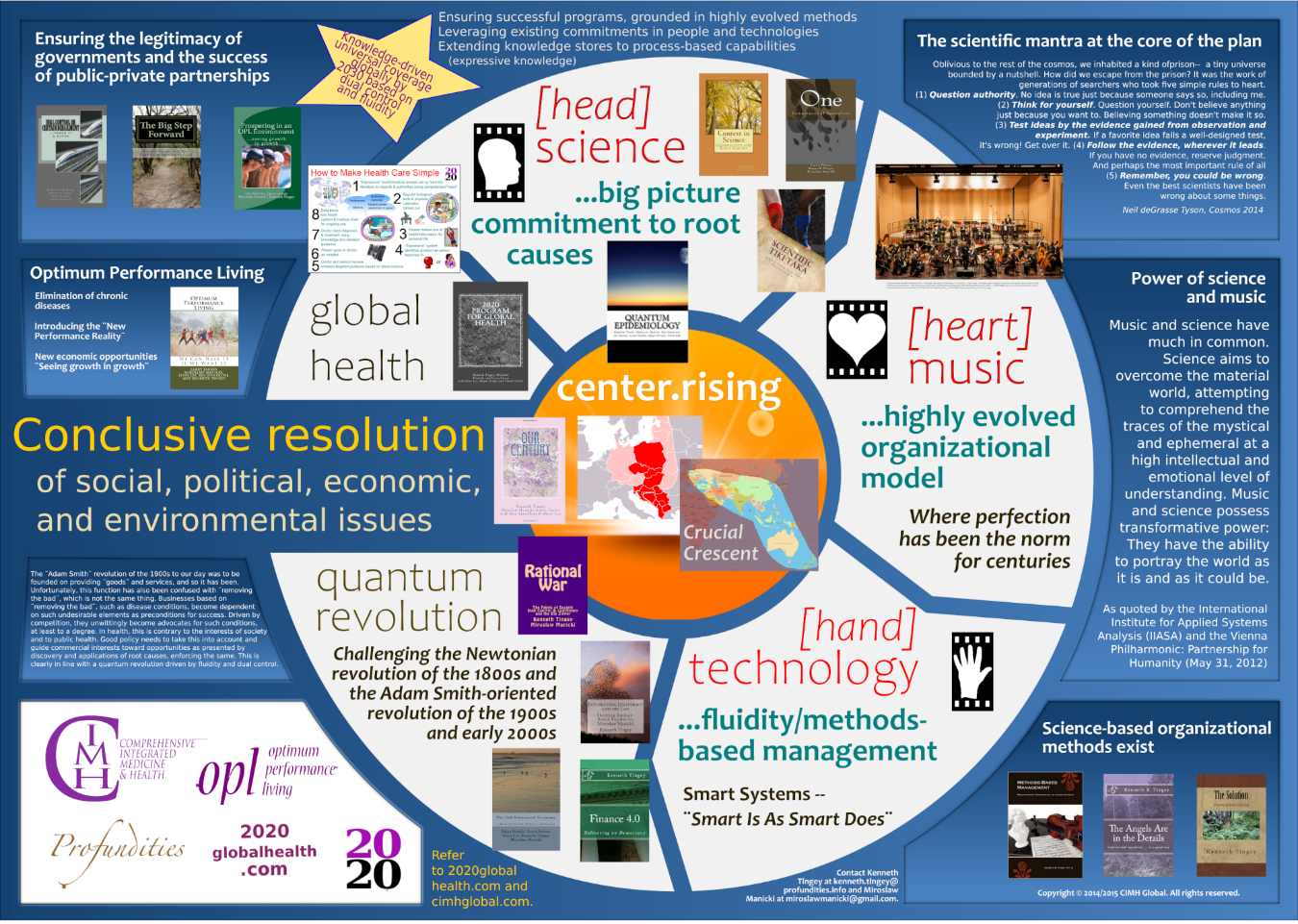
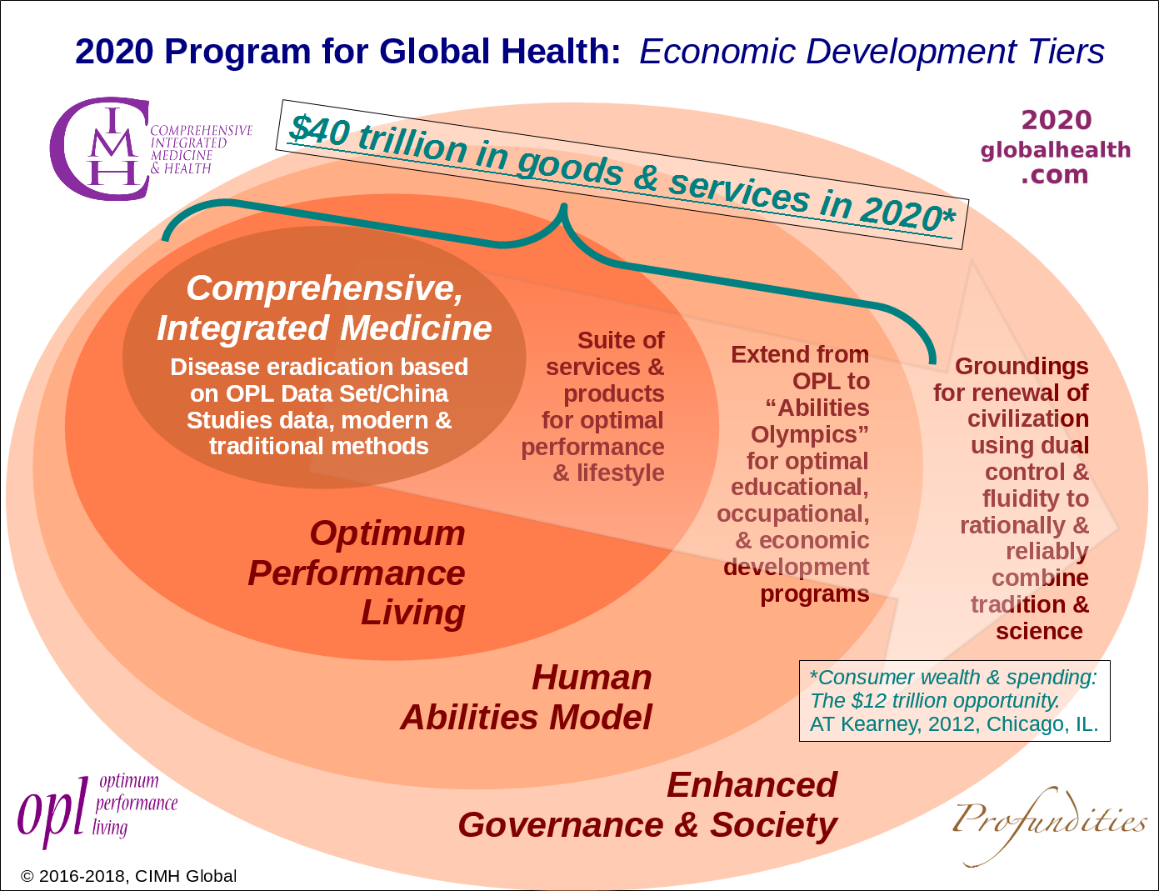
ABOUT THE AUTHORS
| Kenneth B. Tingey, PhD, MBA, Master of Pacific International Affairs, Profundities LLC | |
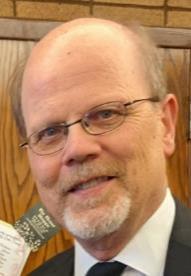 | Kenneth B. Tingey is the Chief Executive Member of Profundities LLC, a digital technology and education provider and a principal in CIMH Global. He has overseen publication of the library of the 2020 Program for Global Health as well research and technical development for the 2020 Program and CIMH Global. Previously he was the Chairman of Board and CEO of the Spendlove Medical Research Institute. He has served as Research Assistant Professor of the United States Clearinghouse of Rehabilitation Training Materials at Utah State University. Prior to that, he was the CEO of OpenNet Corporation, a software development firm specializing in integrated, multifunctional enterprise systems and complex compensation plans, and General Partner of Ventana Growth Fund, an early-stage venture capital fund specializing in medical, health care, and energy ventures. Much of the biotechnology infrastructure in the San Diego, California area, including Pfizer, Inc., can be traced to Ventana investments, most of which originated at the University of California, San Diego. His undergraduate majors at Utah State University and Brigham Young University were music education and accounting, respectively. He has a Master of Business Administration with emphasis on corporate finance and strategy from the Marriott School of Business at Brigham Young University, a Master’s of Pacific International Affairs with specializations in China and Latin America from the School of Global Policy and Strategy at the University of California, San Diego, and a PhD in education with focus on cognitive psychology and organizational legitimacy from the Emma Eccles Jones School of Education at Utah State University. He had two postdoctoral assignments, one with Michael Millington at Utah State University in social networking among rehabilitation counselling state agencies and with Rex Spendlove at the Spendlove Medical Research Foundation in immunoassay testing and application of multiplex testing results in an integrative medical and health environment. For more information, see his LinkedIn profile: https://www.linkedin.com/in/kentingey/. |
| Miroslaw Manicki, MD, Master of Public Medicine, CIMH Global | |
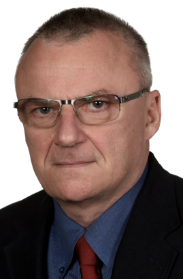 | Miroslaw Manicki is a principal in CIMH Global and in the 2020 Program for Global Health. He has twenty years of technical expertise in all aspects of building resilient national functionally integrated health models, systems financing, financing of health systems in transition (including mix systems: budget & health insurance) through translating the processes of health technology assessment, standardization, strategic planning, development and implementation of clinical guidelines and formulary system (Disease Management Program) into quality-based health services purchasing decisions and payment models, tool for the performance of clinical protocols in health facilities, community systems strengthening, program management, linking national vertical programs and personal care-focused programs, and hospital administration. He has worked as global advisor to the European Commission Directorate-General, Regional and Urban Policy Smart and Sustainable Growth and Southern Europe Competence Centre Smart and Sustainable Growth (2014 – 2015), and Spendlove Medical Research Institute, Utah USA, as well as expert for the National Social Security Task Force, Coordinating Ministry for People Welfare, Republic of Indonesia, Jakarta (2005–2009). Previously he was Vice President, Bureau of Ad-hoc Group—Health Project OECD Paris (2002–2003), Permanent Representative, Minister of Health, Republic of Poland, Council of Europe, European Health Committee, Strasbourg (2002–2003), Special Representative, Prime Minister of the Republic of Poland, Council of the Baltic Sea States, Task Force on Communicable Disease Control (2002–2003), Chairman, Public Health Policy Program, Ministry of Health, Warsaw, Poland (2001–2003), Member, Delegation of the Republic of Poland, World Health Assembly, and WHO Regional Committee for Europe (2002, 2003), Chairman/Member of National Emergency Management Task Force/Working Groups (Ministry of Health, Poland). He has served on medical and administrative assignments in Poland 1979 – present, Libya 1985-1989, and Indonesia 2004-2009, followed by long distance consultation, Albania 2010-2011 to present, Afghanistan 2013, Bangladesh 2014-2015, Lao PDR 2015 (WHO Western Pacific Region), USA 1994,1996,1998, 2010-Present, Netherlands 1991. This work has been sponsored in various cases by GVG, Government of Indonesia, KfW, GTZ, EPOS, European Commission, the World Bank, and the World Health Organization. His academic background includes a Medical Doctor diploma from the Łódź University Medical School, Certificate in Health Care Management Post-Graduate Studies from Hogeschool van Amsterdam, Netherlands, Postgraduate Medical Specialisation in Internal Diseases, and Postgraduate Medical Specialisation in Public Health (MPH) in Poland. Additional training includes public health administration at the International Fellows Program in Public Health at George Washington University/Georgetown University, program & project management in hospital administration at the University of Connecticut, certificate from Project Hope Executive Health Care Management Program, and tropical medicine from the Institute of Marine and Tropical Medicine, Gdynia, Poland. For more information, see his LinkedIn profile: https://www.linkedin.com/in/miroslawmanicki/ |









